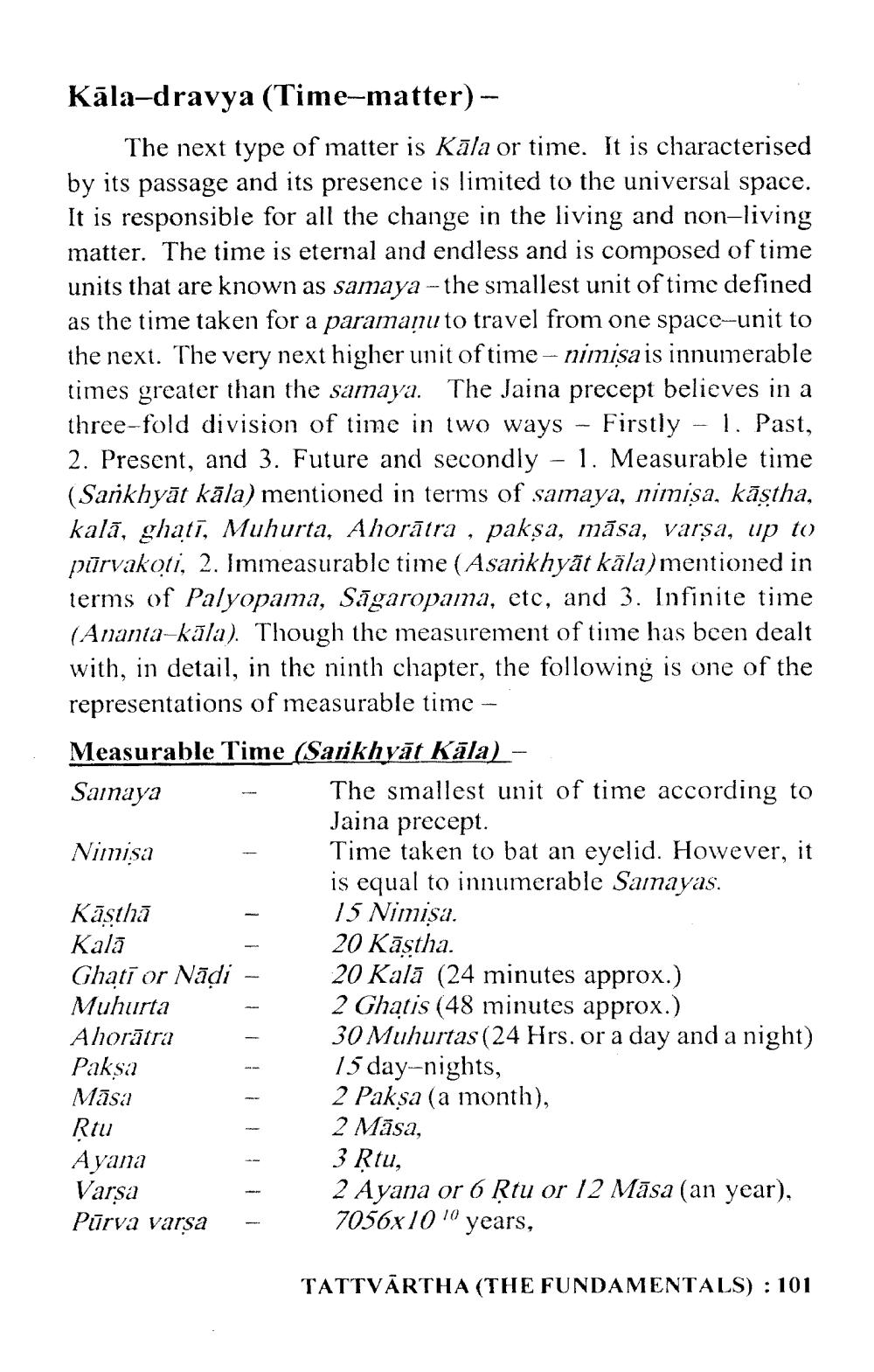________________
Kāla-dravya (Time-matter) -
The next type of matter is Kāla or time. It is characterised by its passage and its presence is limited to the universal space. It is responsible for all the change in the living and non-living matter. The time is eternal and endless and is composed of time units that are known as samaya - the smallest unit of time defined as the time taken for a paramaņu to travel from one space-unit to the next. The very next higher unit of time - nimisa is innumerable times greater than the samaya. The Jaina precept believes in a three-fold division of time in two ways - Firstly - 1. Past, 2. Present, and 3. Future and secondly - 1. Measurable time (Sankhyāt kāla) mentioned in terms of samaya, nimișa, kāştha, kalā, ghati, Muhurta, Ahorātra , pakșa, māsa, varsa, up to pūrvakoti, 2. Immeasurable time (Asankhyāt kāla) mentioned in terms of Palyopama, Sāgaropama, etc, and 3. Infinite time (Ananta-kāla). Though the measurement of time has been dealt with, in detail, in the ninth chapter, the following is one of the representations of measurable time - Measurable Time (Sarikhyāt Kāla) - Sainaya
The smallest unit of time according to
Jaina precept. Nimisa
Time taken to bat an eyelid. However, it
is equal to innumerable Samayas. Kāsthā
15 Nimisa. Kala
20 Kāstha. Ghati or Nāļi - 20 Kalā (24 minutes approx.) Muhurta
2 Ghatis (48 minutes approx.) Ahorātra
30 Muhurtas (24 Hrs. or a day and a night) Paksa
15 day-nights, Māsa
2 Paksa (a month), Rtu
2 Māsa, Ayana
3 Rtu, Varsa
2 Ayana or 6 Řtu or 12 Māsa (an year), Pūrva varsa
7056x10 10 years,
TATTVĀRTHA (THE FUNDAMENTALS) : 101




